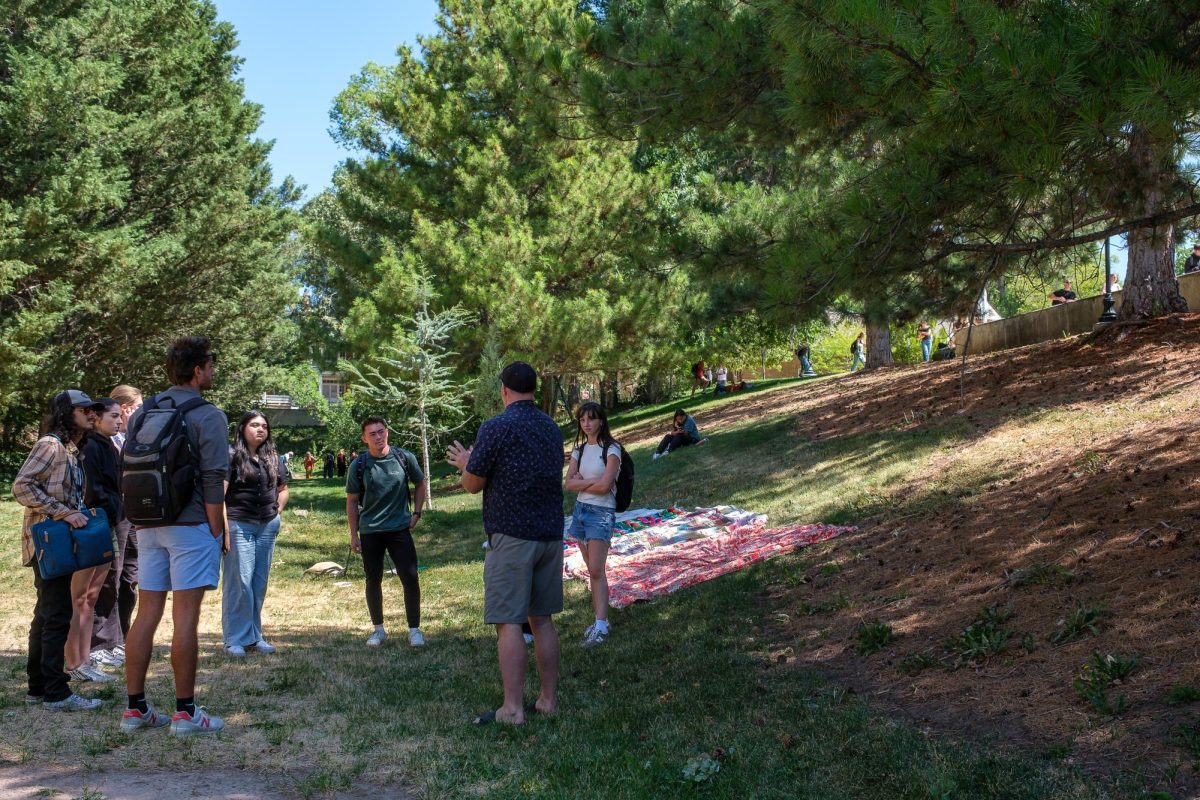This article was originally published in the Outdoors print issue of The Daily Utah Chronicle, originally in stands on September 23, 2024. It has not been updated and some information may be out of date.
Education is highly beneficial for individuals and societies. It can deeply inspire and empower us to build a better world, but we’re nowhere near reaching education’s full potential. Compared to other advanced industrial nations, the U.S.’s academic performance is entirely underwhelming. Students are taught to prioritize grades over genuine learning, curiosity and personal development.
The capacity to learn is one of life’s greatest gifts. It allows for deep exploration, wonder and discovery. When we sacrifice genuine learning for high test scores, a diploma and job prospects, we are killing the true spirit of learning.
Whether or not we enter college, most of us spend thousands of hours of our young lives in the classroom. We have every reason to make learning as effective and inspiring as possible. Instructors must help revive education and embrace new ways of learning. Outdoor teaching is a perfect place to start and Utah instructors must embrace it.
Tradition
Learning should be fun. But I rarely felt joy in traditional school settings. Many feel this way.
High schoolers spend most of their school days feeling tired, stressed and bored. For many of us, school has been characterized by dull lectures, painstaking memorization and testing. We’re told to sit still, stay quiet and keep our eyes forward.
Perhaps most disappointingly, we forget everything we memorized almost immediately after vomiting it onto a scantron. And while forgetting is natural, the mind-numbing nature of traditional teaching certainly doesn’t help.
We sit for long periods. We don’t interact with each other and we learn in colorless rooms under fluorescent lights.
Eric Robertson, a professor at the University of Utah Honors College, said this “just doesn’t match up to how our brains evolved.”
It is time to remedy our outdated and dissatisfying education system. We need an education that encourages deep understanding and creativity. Instructors must dare to free themselves and their students from strictly traditional teaching and start exploring different avenues.
Different Avenues
“Each brain is unique,” Robertson said.
We can better serve all students if we start by accommodating different learning styles. Active learning methods also benefit students far more than passive learning methods like lecturing. Active learning looks like group discussions, involved activities, journal writing and peer-to-peer explanations.
Robertson is implementing one nontraditional and effective teaching method right here on campus through outdoor teaching.
“Our thinking is intimately connected to the environment that we’re in,” he said, and that getting outside “stimulates the brain.”
When students exit the classroom and learn outside, they experience increased cognitive skills, concentration, working memory, physical health and motivation. They also have enhanced creativity, teamwork, problem-solving skills and mental health. Outdoor teaching enhances learning and brings some much-needed joy back into it.
We can enjoy the sunshine, feel the breeze, smell the flowers and appreciate beautiful scenery while becoming more educated individuals. We have every reason to be enthusiastic about outdoor learning.
Nature Matters
Undeniably, outdoor learning is easier to implement in some courses than others. As Robertson said, sometimes “you need to be in the [science] lab.” But outdoor learning still benefits students across all different subjects.
Further, we should deliberately make outdoor environments more conducive to learning. This looks like building more amphitheaters and simple outdoor classrooms. It looks like investing in outdoor equipment like transportable whiteboards. We should also reduce our technology dependence in schools. This will improve learning and enable a smoother transition to outdoor teaching.
Even a mere window view of nature is beneficial for student attention and mental health. Indoor classroom plants also benefit student concentration and performance. This is a testament to the power of using nature in learning.
Instructors have a responsibility to do what is best for their students even when this means straying from what is comfortable, easy or familiar. Instructors who are complacent in maintaining the status quo are obstacles to — rather than promoters of — education. Instructors need to do better, and they should start by incorporating nature into learning.
Moving Forward
Utahns and Utah instructors are in a special position to embrace outdoor learning. Robertson said “Utah is positioned perfectly” for outdoor learning as it has “an amazing outdoor environment.” We have sunny winters, great outdoor culture, relatively few storms and generally pleasant seasons.
With the outdoors we can bring learning back to life. When we truly prioritize education, we can overcome the world’s greatest challenges and seize its most exciting opportunities.





